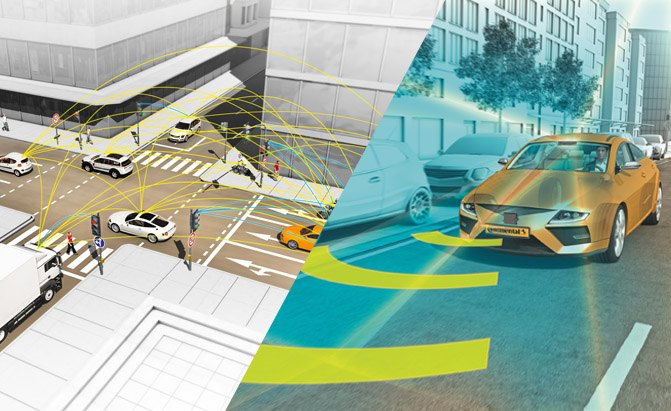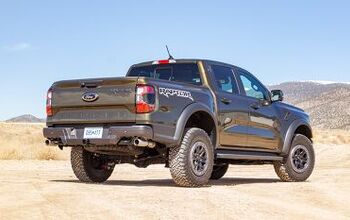Here's How One Company Wants to Eliminate Deaths on the Road

Blind-spot monitoring, lane-keep assist and low-speed collision prevention are but a handful of the advanced driver-assistance systems that are flourishing in the new vehicle market today. Helping enable next-generation safety and convenience features is supplier company Continental.
This German giant is probably best known by consumers for its tires or perhaps engine components, but its varied divisions provide countless products to automakers, everything from interior components and software to rubber parts and even turbochargers.
But when it comes to reducing crashes and highway deaths, its Chassis and Safety division is leading the charge. This is the business unit that enables many of the cutting-edge features that save lives and make driving easier.
Karl Haupt, executive vice president of the advanced driver-assistance systems (ADAS) business unit at Conti said, “We are the sensor people.” From short-range lidar to stereo-camera arrays, surround-view monitors to long-range radar, they provide automakers with the hardware and software that enables many of the industry’s most popular driver-assistance technologies.
Danger on the Rise
And the widespread proliferation of these systems can’t come soon enough. According to the National Safety Council, a non-profit organization founded by Congress in 1913, traffic fatalities in the U.S. rose around 8 percent last year compared to 2014. They estimate that some 38,300 people died on American roads and some 4.4 million were injured badly enough to require medical attention. These statistics make 2015 the deadliest year for drivers since 2008.
SEE ALSO: More Simple Designs and Crossovers Coming to Mercedes-Benz
The National Safety Council says that the rise in fatalities and injuries is due to lower fuel prices and reduced unemployment, factors that have encouraged people to drive greater distances.
Even more sobering, Haupt said, “It’s not just the drivers and the passengers in the cars, it’s also about the pedestrians.” Accidents with them increased last year as well.
“And I think the reason is … also clear, and this is distraction,” said Haupt. More and more motorists are preoccupied while behind the wheel, and the same is true of pedestrians. He mentioned that distracted walking has also become an issue.
In spite of these undesirable increases, Continental is sticking to its “vision zero” mission, which is basically the total elimination of roadway deaths and injuries. The proliferation of their advanced driver-assistance technology is how they plan to achieve this high-minded goal.
Safety for All
On a global basis, Continental estimates that the adoption of advanced driver-assistance systems will grow into a €10 billion business by the year 2020. That’s up from only around €2 billion last year. There are several key factors that will contribute to this increase, including the availability of these features in more vehicle nameplates, the growth of automated driving and, of course, government regulation.
But what are drivers really looking for? Do they want safety or are comfort and convenience more important?
According to the 2015 Harris Poll AutoTechcast, the most popular features with drivers are backup cameras, backup-warning systems, satellite radio and blind-spot monitoring, to name a handful of items.
In particular, Haupt said the popularity of backup-assist features is “because for the drivers, it is most difficult to detect what is behind them.” Accordingly, these can make the task of parking and maneuvering in tight quarters much safer and less stressful.
Room to Grow
“Even those investigations of the market show that the systems are highly desired and this is also an opportunity, and something that will drive the market forward,” said Haupt. Still, there is much work to be done to increase the market penetration of some of these technologies.
Take adaptive cruise control, for instance. According to data provided by WardsAuto, the installation rate in the U.S. last year was only around 8 percent, about twice what it was just two years prior. It’s a similar story for blind-spot alert, which was only included in about 10 percent of vehicles in 2013, increasing to roughly 20 percent last year.
SEE ALSO: Are Aluminum Vehicles Really More Expensive to Repair?
Compare these features to stylish aluminum wheels, which were included in nearly 80 percent of vehicles last year, or backup cameras, which were found in more than 70 percent of cars and trucks sold in 2015 and one can see how far advanced driver-assistance technology is.
But there’s plenty of opportunity in the market today. “What we are seeing is that the installation rates, especially of the ADAS systems … that those installation rates are going up and that we are still, in the U.S., on a relatively low level, and this creates some expectation, also for the future,” said Haupt. The popularity of these features is slowly growing. It’s easy to imagine that as more motorists become familiar with advanced driver-assistance technologies, sales of these systems will increase, which is good news for both roadway safety and Continental.
Check out our Tips and Advice section

Born and raised in metro Detroit, Craig was steeped in mechanics from childhood. He feels as much at home with a wrench or welding gun in his hand as he does behind the wheel or in front of a camera. Putting his Bachelor's Degree in Journalism to good use, he's always pumping out videos, reviews, and features for AutoGuide.com. When the workday is over, he can be found out driving his fully restored 1936 Ford V8 sedan. Craig has covered the automotive industry full time for more than 10 years and is a member of the Automotive Press Association (APA) and Midwest Automotive Media Association (MAMA).
More by Craig Cole




































Comments
Join the conversation
Ouch, i can't believe National Safety Council says deaths are up because unemployment is down. Everyone knows the current Unemployment figure going down is actually a symptom of rising long-term unemployment. Many poor souls out there have been unemployed for so long they are actually officially considered as having given up looking for work.